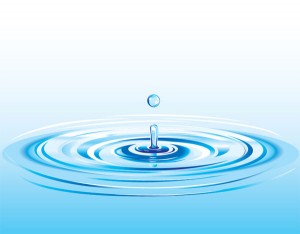10) IN AN EMERGENCY, YOUR WATER CAN BECOME DANGEROUSLY CONTAMINATED.
After the initial danger from an earthquake or hurricane or other disaster has passed, the most significant risk to your family’s health could very likely be contaminated water. This is especially true if there is flooding, damage to underground pipes and electricity blackouts. Your tap water (if it’s still flowing) could be contaminated with sewage (bacteria, viruses and parasites) and chemicals from ruptured chemical pipelines, storage tanks, tankers or damaged refineries. The Japanese Fukushima nuclear accident demonstrates that our water can even become contaminated from events that happen hundreds or thousands of miles away.
9) SAFE DRINKING WATER IS THE MOST IMPORTANT PREP.
It’s important to be prepared for an emergency, but keep in mind the priority of your preparation items. Removing your family from imminent danger, such as getting to high ground if a tsunami is headed your way, keeping your family warm in winter and providing your family with a safe supply of drinking water are at the top of the list. If you don’t have a safe supply of water, you could quickly find yourself in a very dangerous situation in which you are sick, panicked, and unable to think and function properly.
8) LACK OF SAFE DRINKING WATER IS ONE OF THE CAUSES OF PANIC.
If we can learn anything from recent disasters, is that the first thing the public does is scream for the government to immediately deliver bottled water. Most people have never experienced real thirst. Water is not an option, your body demands it and it must have it. This biological need can and will override rational thought. By being prepared with safe drinking water, you won’t be part of the panic and will instead be able to focus on next steps for keeping your family safe.
7) CHILDREN AND INFANTS ARE AT THE HIGHEST RISK.
Children and infants are more susceptible to contaminants in water. Why? First of all, a child’s body contains a higher ratio of water than an adult’s body and they consume more water for their weight than adults. Children have a lower body mass, thus chemical exposures are greater pound for pound. Also, children’s brains are still developing and chemicals could interfere with this development process.
6) YOU DON’T KNOW WHETHER YOUR WATER IS CONTAMINATED.
You can’t tell whether your water is contaminated by looking at it, smelling it or tasting it. Water could look crystal clear and still contain very dangerous contaminants.
5) MOST PEOPLE DON’T KNOW MUCH AT ALL ABOUT WATER (INCLUDING PROFESSIONALS).
The truth is that most people know shockingly little about water. This includes many people who should know better including doctors, nutritionists, government officials, reporters, and emergency response personnel. Be careful who you take your advice from.
4) THE GOVERNMENT HAS DIFFERENT GOALS THAN YOU DO.
Governments are terrified of a panicked populous, so their primary goal is usually to keep the populous calm, whereas your primary goal is the safety of your family. After the Japanese Fukushima nuclear accident for example, the Japanese government went to ridiculous lengths to calm people down. For over a month they told people not to worry and that there was no radiation leak. It was only after months had past and people had calmed down that they let the truth leak out in small bite-sized pieces. In reality, the situation was (and still is) an extremely dangerous situation.
3) THERE ARE DIFFERENT TYPES OF WATER EMERGENCIES (AND THEY HAVE TO BE HANDLED DIFFERENTLY).
Did you know that there are different types of water emergencies? Not only are there different types of emergencies, but different emergencies may require different treatment processes. For example, health agencies often recommend that you boil water in a water emergency if they think that there may be biological contaminants in the water. But, earlier this year there was the West Virginia chemical spill in the Elk River. The LAST thing you want to do for that emergency is to boil the water, because you would have actually concentrated the chemicals in your water.
2) KNOWLEDGE IS KEY.
The most important survival tool that you need is KNOWLEDGE. More than knowledge, you should have a deep understanding of some key points so you know exactly what to do and what not to do, and you can adapt to different situations.
1) YOU CAN LEARN THE KEY POINTS IN LESS THAN AN HOUR.
We would like to invite you to join us for a free one-hour, life-saving class about treating water in an emergency on May 15th at 7pm (click here to register). In this class you will learn what you need to know to produce safe drinking water for your family in an emergency. This class is a must for everyone. Seats are limited, so sign up today. Also, share this article with your loved ones and encourage them to also attend the class. Register here.
Glenn Meder is one of the leading experts on water in an emergency situation and is the designer of the Survival Still emergency water distiller.
This article was originally published at Ready Nutrition™ on May 14th, 2014







